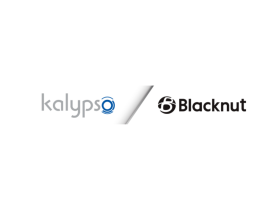Welcome to Fintech Pulse, your daily op-ed–style briefing on the latest developments shaping the financial technology landscape. In today’s edition, we dive into five major announcements—from confidential IPO filings to strategic partnerships—offering concise summaries, critical analysis, and forward-looking commentary. Let’s explore how these stories will influence fintech innovation, investment, and governance in the months ahead.
1. Wealthfront Corporation Confidentially Files to Go Public
What Happened:
On June 23, 2025, automated-investing pioneer Wealthfront Corporation filed a confidential draft registration statement with the U.S. Securities and Exchange Commission (SEC) to go public under the Securities Act of 1933. The move signals the firm’s intention to list its shares on a national exchange, likely later this year. Wealthfront has not disclosed the number of shares or price range sought in its initial public offering (IPO).
Source: Reuters
Key Details & Context:
-
Revenue Trajectory: Wealthfront reported strong revenue growth—its assets under management (AUM) surged above $30 billion in Q1 2025, reflecting robust net inflows and an expanding customer base.
-
Profitability Goals: While still operating at a net loss, Wealthfront’s management projects breakeven by mid-2026, driven by fee income from new product launches, including cash management and lending offerings.
-
Competitive Landscape: Wealthfront faces stiff competition from Betterment, Vanguard Personal Advisor Services, and robo-advisor arms of major banks, which have similarly invested in algorithmic advice and hybrid human/AI models.
Editorial Commentary:
Wealthfront’s confidential filing underscores a maturing robo-advisor market. After years of private capital injections, leaders in digital wealth management are seeking public valuations to fund product diversification and international expansion. However, investors will scrutinize Wealthfront’s path to profitability, since fee compression and rising customer acquisition costs pose ongoing challenges. For Wealthfront to stand out, it must demonstrate superior customer lifetime value and carve out niches—perhaps via specialized ESG portfolios or deeper integration with crypto custody.
Implications:
-
Investor Sentiment: A successful IPO could validate the growth potential of stand-alone fintechs, paving the way for other unicorns to follow suit.
-
Industry Consolidation: Pressure to scale efficiently may accelerate M&A among mid-tier robo-advisors and wealthtech startups.
-
Regulatory Focus: The SEC and FINRA may tighten disclosure requirements for AI-driven advice as digital asset offerings expand.
2. Mastercard Launches Program to Support Underrepresented Fintech Founders
What Happened:
In November 2024, Mastercard unveiled an initiative to bolster underrepresented fintech entrepreneurs by providing mentorship, grant funding, and access to Mastercard’s global network. The program aims to address funding disparities and spur innovation in overlooked communities.
Source: Mastercard Press Release
Key Details & Context:
-
Target Cohort: The inaugural cohort includes 30 startups led by founders from women, Black, Latinx, and LGBTQ+ backgrounds, selected from over 500 applicants across North America.
-
Program Benefits: Each startup receives up to $100,000 in non-dilutive grant funding, executive mentorship, and pilot opportunities with Mastercard’s enterprise clients.
-
Long-Term Vision: Mastercard commits to scaling the program into new regions, including Europe and Asia Pacific, by Q4 2025.
Editorial Commentary:
Mastercard’s program exemplifies proactive corporate support for diversity and inclusion—a strategic imperative in fintech. While traditional VCs have historically underserved diverse founders, corporate-sponsored initiatives can fill critical funding gaps and offer small firms rapid market access. However, the long-term success of these efforts hinges on sustained investment beyond one-off grants and genuine co-creation of products that serve underbanked communities. Mastercard should quantify outcomes via metrics like job creation, revenue growth, and financial inclusion indices to validate the program’s impact.
Implications:
-
Ecosystem Growth: Enhanced funding pipelines can unlock niche fintech solutions—e.g., remittances, community-lending, and microinsurance.
-
Competitive Response: Other payments giants (Visa, PayPal) may follow suit, launching their own diversity-focused incubators.
-
Policy Influence: Demonstrated success could encourage regulators to incentivize DEI programs through tax credits or grant matching.
3. Three Mega-Trends Shaping the Future of Fintech
What Happened:
An Inc. magazine analysis by James Barrese identifies three overarching trends set to redefine financial services: embedded finance, hyper-personalization via AI, and decentralized finance (DeFi) integration.
Source: Inc. Magazine
Key Takeaways:
-
Embedded Finance: Non-financial platforms—from e-commerce to healthtech—are embedding payments, lending, and insurance directly into user journeys, blurring the lines between tech giants and traditional banks.
-
AI-Driven Personalization: Advanced machine learning enables real-time, individual risk profiling and tailored product recommendations, enhancing customer engagement but raising data privacy concerns.
-
DeFi Convergence: Institutional players are piloting blockchain-based settlement and lending, seeking to combine DeFi’s transparency with regulated finance’s stability.
Editorial Commentary:
These mega-trends reflect fintech’s evolution from standalone apps to deeply integrated, AI-powered ecosystems. Embedded finance reduces friction for end users but poses integration challenges—legacy IT systems, compliance silos, and partnership governance must be addressed. Meanwhile, personalized AI can boost cross-sell rates but may trigger regulatory scrutiny under fair-lending laws and GDPR. Lastly, DeFi’s permissionless ethos is enticing, yet bridging the trust gap between retail investors and blockchain protocols will require robust custody solutions and clear regulatory frameworks.
Implications:
-
Bank-Tech Alliances: Traditional banks will increasingly partner with or acquire fintechs to embed modern capabilities, altering competitive dynamics.
-
Regulatory Evolution: Policymakers must update frameworks to govern AI biases, data ownership, and cross-border digital transactions.
-
Consumer Expectations: As personalized services become standard, companies lagging in AI adoption risk obsolescence.
4. Tetrate Joins FINOS to Break the AI Governance Stalemate
What Happened:
Tetrate, a leading service mesh and microservices management firm, announced in late June 2025 that it joined the Fintech Open Source Foundation (FINOS) to advance AI governance for regulated environments.
Source: PR Newswire
Key Details & Context:
-
Objective: To co-develop open-source tools and best practices that ensure transparency, auditability, and compliance of AI/ML models in financial services.
-
Initial Projects: The collaboration will focus on standardized risk frameworks, model-explainability libraries, and compliance connectors for regulatory reporting.
-
Community Engagement: Tetrate and FINOS will host hackathons and working groups, inviting banks, insurers, and technology vendors to contribute.
Editorial Commentary:
The AI governance deadlock arises from financial institutions’ need to harness ML efficiencies while satisfying deterministic audit requirements. Tetrate’s participation in FINOS is a proactive step toward consensus-driven toolkits that can lower barriers to adoption. Open standards reduce vendor lock-in and foster interoperability—critical in ecosystems where a single AI decision may traverse multiple platforms. Yet, alignment across competing stakeholders—banks, regulators, cloud providers—will test the initiative’s governance model. Success hinges on a neutral stewardship that balances innovation speed with audit rigor.
Implications:
-
Faster AI Deployment: Reusable, community-tested libraries can accelerate pilot-to-production timelines for AI-driven credit scoring and fraud detection.
-
Risk Mitigation: Standardized explainability modules will help institutions meet Model Risk Management (MRM) guidelines.
-
Ecosystem Synergy: A thriving open-source community can spawn ancillary services—training, certification, and compliance audits.
5. Vantage Debuts at Wealth Expo Peru 2025
What Happened:
At Wealth Expo Peru 2025 in Lima, Vantage unveiled its latest digital advisory platform tailored for Latin American high-net-worth individuals. The solution integrates local investment products, cross-border asset management, and real-time tax analytics.
Source: PR Newswire (Middle East & Africa)
Key Details & Context:
-
Localization: Vantage partnered with regional brokers to offer tailored ETFs and fixed-income instruments domiciled in Peru, Mexico, and Chile.
-
Regulatory Compliance: The platform embeds automated KYC/AML checks aligned with Superintendencia de Banca, Seguros y AFP (SBS) regulations.
-
Tech Stack: Built on microservices with containerized deployments, ensuring scalability and rapid feature rollout.
Editorial Commentary:
Vantage’s Latin America entry spotlights the region’s underbanked affluent market, projected to grow at 8% CAGR through 2030. Localized product suites and tax-aware analytics are compelling value propositions, yet success depends on user-experience excellence and trust-building. Given the region’s complex regulatory mosaic—spanning multiple currencies and cross-border tax treaties—Vantage must maintain rigorous compliance and transparent fee structures. Strategic alliances with local financial institutions will be crucial to navigate distribution channels and customer support infrastructures.
Implications:
-
Market Expansion: Other global fintechs will eye Latin America as next growth frontier, intensifying competition.
-
Product Innovation: Demand for tax-optimized portfolios and multi-currency accounts will rise, pushing providers to enhance analytics.
-
RegTech Opportunities: Automated compliance solutions tailored to multi-jurisdictional environments will be in higher demand.
Concluding Thoughts
Today’s headlines underscore fintech’s relentless pace of innovation—from wealthtech IPOs to corporate-backed diversity accelerators, open-source AI governance, and frontier market expansions. Several themes emerge:
-
Scale & Profitability Pressure: As fintechs like Wealthfront chase public markets, they must balance growth with sustainable unit economics.
-
Inclusive Innovation: Programs by Mastercard and others highlight the increasing prioritization of diversity to unlock untapped market potential.
-
Ecosystem Collaboration: Open-source consortia (FINOS) signal a shift away from isolated pilots toward shared standards, critical for AI and embedded finance.
-
Regional Tailoring: Customized solutions, such as Vantage’s Latin America platform, affirm that localization remains a competitive moat.
As the industry continues to evolve, stakeholders must navigate complex trade-offs between agility and governance, personalization and privacy, global reach and local nuance. Fintech Pulse will keep you informed and engaged—join us tomorrow for another deep dive into the forces reshaping financial services.

















Got a Questions?
Find us on Socials or Contact us and we’ll get back to you as soon as possible.